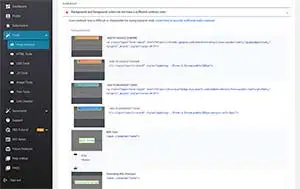So, what exactly is keyword gap analysis? Well, it's all about identifying the keywords that your competitors are ranking for but you're not. By analyzing the keywords that your competitors are targeting and comparing them to your own keyword strategy, you can uncover opportunities to fill in the gaps and improve your website's search engine rankings.
But why should you care about this stuff? Well, think about it this way: when someone goes to Google and types in a query, they're usually looking for a specific answer or solution to their problem, right? And most of the time, they're going to click on one of the top results that show up. If your website isn't showing up for the right keywords, you're missing out on potential traffic.
That's where keyword gap analysis comes in. By identifying the keywords that your competitors are ranking for but you're not, you can identify areas where you can improve your website's visibility and attract more visitors. For example, if you notice that one of your competitors is ranking for a keyword that's relevant to your business but you're not, you might want to create some new content targeting that keyword or optimize your existing content to better target it.
There are all kinds of tools out there that can help you conduct keyword gap analysis, from free tools like Google Keyword Planner to more advanced paid tools like SEMrush and Ahrefs. They all have their own unique features and capabilities, so it's worth experimenting with a few different ones to see which ones work best for you.
So, whether you're a seasoned SEO pro or just starting out, keyword gap analysis is definitely worth exploring. It's like shining a light on the dark corners of the internet, revealing all kinds of opportunities to improve your website's search engine rankings and attract more visitors.
Tools for Identifying Keyword Gaps
These tools provide insights into the keywords that your competitors are ranking for but you are not. Some popular tools for identifying keyword gaps include SEMrush, Ahrefs, and Moz.
These tools allow you to analyze your competitors' keywords, search volume, competition level, and other metrics. By comparing your keyword strategy with that of your competitors, you can identify the keywords that you should be targeting to bridge the gap and improve your SEO rankings.
In addition to these tools, you can also use Google's Keyword Planner to identify keyword gaps. This tool provides keyword suggestions and search volume data, giving you insights into the keywords that your target audience is using.
Strategies for Bridging Keyword Gaps
Bridging keyword gaps involves optimizing your content to target the keywords that you have identified as gaps in your SEO strategy. Here are some strategies to help you bridge keyword gaps:
- Create new content: Identify the keywords that you are not currently targeting and create new content specifically optimized for those keywords. This could include blog posts, articles, or landing pages.
- Optimize existing content: Review your existing content and optimize it by incorporating the identified keywords. This could involve updating the title, headings, meta tags, and content to align with the targeted keywords.
- Improve internal linking: Ensure that your website's internal linking structure is optimized to guide search engines to the pages targeting the identified keywords. This can help improve the visibility and ranking of those pages.
- Build backlinks: Generate high-quality backlinks to the pages targeting the identified keywords. Backlinks from reputable websites can help improve the authority and ranking of your pages.
- Monitor and adjust: Continuously monitor the performance of your optimized content and make adjustments as needed. This could involve refining your keyword strategy, updating content, or improving user experience.
By implementing these strategies, you can bridge the keyword gaps in your SEO strategy and improve your rankings in search engine results.
How can website owners use keyword gaps to improve their SEO strategy?
Website owners can use keyword gaps to improve their SEO strategy in the following ways:
Content Optimization: Create new content or optimize existing content to target relevant keywords identified through keyword gap analysis.
Backlink Building: Identify opportunities to earn backlinks from high-authority websites by targeting keywords that competitors are ranking for but the website is not.
On-Page SEO: Optimize meta tags, headings, and other on-page elements to target keyword gaps and improve the website's relevance for those keywords.
Content Promotion: Promote new or optimized content targeting keyword gaps through social media, email marketing, and other channels to attract organic traffic and earn backlinks.










